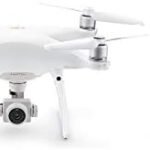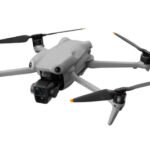Introduction
Overview of DJI in the Drone Industry
When it comes to drones, DJI has truly made a name for itself. Established in 2006, this Chinese tech giant has consistently pushed the boundaries of drone technology, showing up with innovative models that have transformed aerial photography, videography, and even commercial applications. You may have heard about their flagship models like the Mavic series and the Phantom series, which offer stunning camera capabilities and user-friendly features. Here’s a quick glimpse of what DJI brings to the table:
- Advanced Camera Technology: Their drones come equipped with powerful cameras, often capable of 4K resolution and above, giving users incredible footage right out of the box.
- Intelligent Flight Modes: Features like ActiveTrack, Waypoints, and Hyperlapse allow users to capture stunning aerial shots without needing extensive piloting skills.
- Robust Build Quality: DJI drones are built to withstand varying weather conditions, making them a reliable choice for both amateur and professional pilots.
DJI’s extensive product line covers everything from beginner-friendly drones to sophisticated models designed for professional use. This comprehensive range solidifies their position at the forefront of the drone industry. With a global market share exceeding 70%, DJI’s influence is formidable, and they continue to innovate and release new products regularly. But, while DJI holds a dominant position, it’s essential to keep an eye on the competition. The drone market is rapidly evolving, with several companies emerging who are eager to challenge DJI’s supremacy.
Significance of Identifying Top Competitors
Understanding who DJI’s competitors are and what they have to offer can provide significant insights into the drone market as a whole. It’s not just about recognizing brands; it’s about grasping the competitive landscape and evaluating different features, capabilities, and values. Here’s why identifying top competitors in the drone industry is important:
- Innovation Tracking: By keeping tabs on competitors, you can spot trends and innovative technologies that might soon appear in the products you use or might want to purchase. For instance, Skydio has been making waves with its autonomous flying technology.
- Informed Decisions: Whether you’re a hobbyist or a professional, understanding the strengths and weaknesses of various brands helps you make informed decisions about which drone fits your budget and requirements.
- Market Trends: The emergence of new competitors can signal shifts in market demand or consumer preferences. For example, if Parrot gains traction with their unique drone features, it could indicate a growing interest in eco-friendly flight options.
- Value Comparison: Knowing what other companies provide allows you to better evaluate DJI’s offerings. Are they the best option for you, or could another brand meet your needs at a more competitive price?
- Broader Perspective: By examining how different companies compete, you gain a clearer view of the industry landscape. This broader perspective can help you appreciate why certain features, like battery life or weight, are important to consider based on your planned use.
In the fast-paced world of drones, being aware of the alternatives ensure that you remain at the top of your game, whether you use drones for personal enjoyment, professional projects, or commercial ventures. So let’s take a closer look at some of the top contenders that are giving DJI a run for its money!
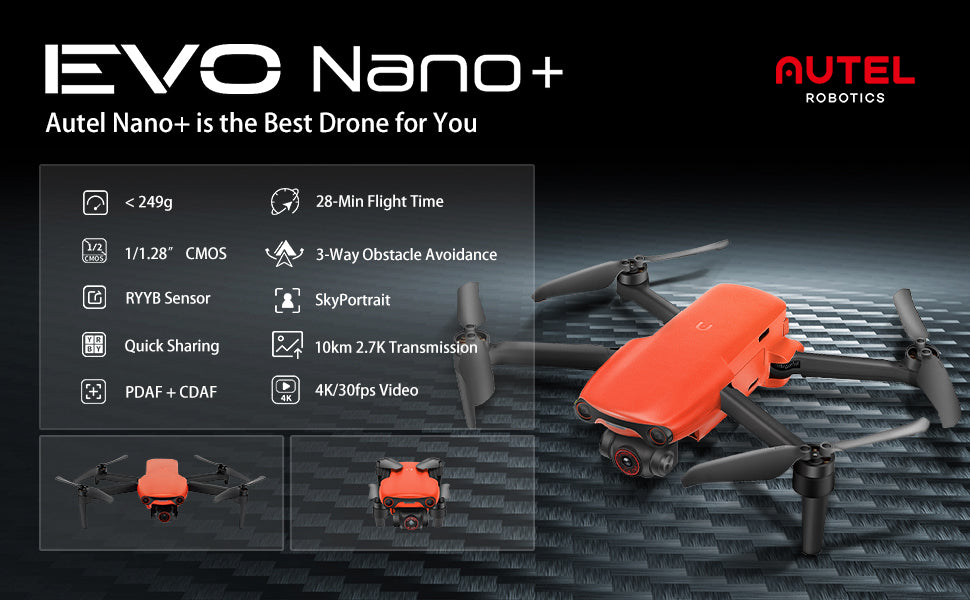
Autel Robotics
Company Background
Autel Robotics started its journey in 2014 and quickly made waves in the drone industry. Headquartered in the United States, this company focuses on delivering high-quality, user-friendly drones that cater to both the consumer and commercial markets. One of the things that set Autel apart is its commitment to innovation and customer-centric design. What grabbed my attention about Autel is their approach to addressing user feedback. They actively engage with their customers and incorporate their suggestions into new designs and updates. This willingness to adapt is a breath of fresh air in a market that’s often dominated by a few big players. Here are some interesting highlights about Autel Robotics:
- Global Presence: Despite being relatively young, Autel has established itself as a global player, with a strong distribution network spanning over 60 countries.
- Innovative Development: The company has invested heavily in research and development, enabling them to create drones equipped with cutting-edge technology. With each new model, they aim to provide enhanced flight performance and impressive camera capabilities.
- User-Centric Philosophy: Autel emphasizes creating drones that are not just advanced, but also straightforward and enjoyable to fly, making them popular choices among beginners and experienced pilots alike.
As the drone market has become increasingly competitive, Autel Robotics has managed to carve out a niche for itself. Their dedication to combining quality performance with user-friendly designs has garnered them a loyal customer base.
Key Competing Drone Models
When it comes to Autel Robotics’ standout models, two drones certainly deserve the spotlight: the Autel EVO Lite+ and the Autel EVO Nano+. Each of these models showcases unique features that make them competitive alternatives to DJI’s offerings. 1. Autel EVO Lite+ The EVO Lite+ is an impressive drone that can rival some of DJI’s top models. It’s designed for those serious about aerial photography and videography. Here are some notable features:
- Camera Quality: It boasts a 1-inch CMOS sensor, capable of capturing 50 MP stills and 6K video at 30fps. The image quality it delivers is outstanding, making it ideal for filmmakers and content creators.
- Flight Time: With a maximum flight time of 40 minutes, it allows extended flying sessions without the need to constantly recharge.
- Advanced Smart Features: The Lite+ includes intelligent flight modes such as Dynamic Track and Boomerang, making it easier to capture dynamic shots without intricate manual controls.
2. Autel EVO Nano+ On the other hand, if you’re looking for something compact and portable, the EVO Nano+ is hard to beat. It’s perfect for hobbyists and travelers who want a lightweight option without sacrificing performance.
- Size and Weight: Weighing in at just 249 grams, it’s easier to carry and doesn’t require FAA registration in many countries.
- Camera Performance: Similar to the Lite+, the Nano+ features a 50 MP camera and can shoot 4K video. It also includes a 1/1.28-inch CMOS sensor, which helps capture stunning footage.
- User-Friendly: The drone comes with Autel’s EVO app, offering a straightforward interface for beginners and advanced users alike.
In summary, Autel Robotics has positioned itself as a serious contender in the drone market with these models. Their commitment to innovation, customer feedback, and robust feature sets make them a worthy option for anyone in the market for a new drone. Whether you’re capturing breathtaking landscapes or simply enjoying the thrill of flying, Autel products offer compelling choices that go toe-to-toe with DJI. As we explore more competitors, let’s see how they stack up against Autel and DJI in the ever-evolving drone industry!

Parrot
Company Profile
When it comes to innovative and consumer-friendly drones, Parrot has been around the block for a while. Established in 1994 in France, Parrot initially gained fame for its wireless technology products before transitioning to drone manufacturing in the early 2000s. This shift has transformed them into one of the leading contenders in the drone industry, offering products that cater to enthusiasts, professionals, and everything in between. One thing I appreciate about Parrot is their visionary approach: they focus on creating drones that not only offer competitive features but also come with an environmentally conscious design. With a commitment to sustainability, Parrot’s products are often made from recycled materials, setting a nice precedent in an industry that still grapples with its environmental impact. Key aspects of Parrot’s identity include:
- Innovative Solutions: Parrot has consistently made news for its innovative tech, particularly its integration of artificial intelligence in drone operations and its emphasis on autonomous flying capabilities.
- Accessibility: Their drones are known for being user-friendly, customizable, and affordable, making them great options for newcomers and casual users.
- Diverse Product Line: From hobbyist drones to advanced solutions for commercial use, Parrot has a bit of everything to suit different needs, which is something you hardly find in other brands.
With a focus on both autonomous capabilities and robust camera technology, Parrot has become an appealing choice for those looking for something fresh and different from the mainstream offerings.
Drone Features and Capabilities
Let’s dive into some of the standout features and capabilities of Parrot drones, particularly focusing on their flagship models, the Parrot Anafi and Parrot Bebop series. 1. Parrot Anafi The Parrot Anafi is one of the brand’s standout models and has garnered considerable praise for its design and functionality. Here’s what makes it appealing:
- Camera Capabilities: The Anafi boasts a 21 MP camera that can shoot 4K HDR video. One of the features that I find particularly impressive is its 180-degree tilt gimbal; this means you can capture angles that many other drones simply can’t, adding creativity to your aerial videography.
- Flight Performance: With up to 25 minutes of flight time, the Anafi provides ample opportunity to capture stunning footage during a single flight session.
- Compact Design: Weighing just 320 grams, the Anafi is extremely portable. It easily fits in a backpack, which I found very useful during my last hiking expedition. It’s lightweight and ready to go, making it perfect for adventurers.
2. Parrot Bebop Another significant model is the Parrot Bebop, which has multiple versions catering to different levels of users. Here’s what makes the Bebop stand out:
- Beginner-Friendly: The Bebop is equipped with a user-friendly interface and offers excellent stability in the air, making it an ideal choice for novice pilots.
- Integrated Features: With a 14 MP camera and 1080p video capabilities, you get decent quality flight footage without breaking the bank.
- Robust Build: The design is durable, which is great considering that droning mishaps can happen during early learning stages.
Key Features Across Parrot Drones
- Smartphone Integration: Most Parrot drones can be seamlessly controlled via smartphones, offering a fantastic app experience that adds to ease of use.
- Autonomous Flight Modes: Parrot drones come with options for autonomous flying, which can assist in capturing stunning footage without the usual piloting intricacies.
- Affordable Pricing: Generally, Parrot’s drones are more budget-friendly compared to some of their major competitors, making them an attractive option for those on a budget.
In conclusion, Parrot has carved out a unique niche within the drone market by honing in on user-friendly design and innovative features. Whether you’re capturing stunning landscapes or enjoying leisurely flights, their drones provide solid performance without overwhelming complexity. As we continue our journey into the competitive landscape of drones, it’s essential to explore how Parrot’s capabilities stack up against other brands like Yuneec, Skydio, and beyond. Let’s keep flying!
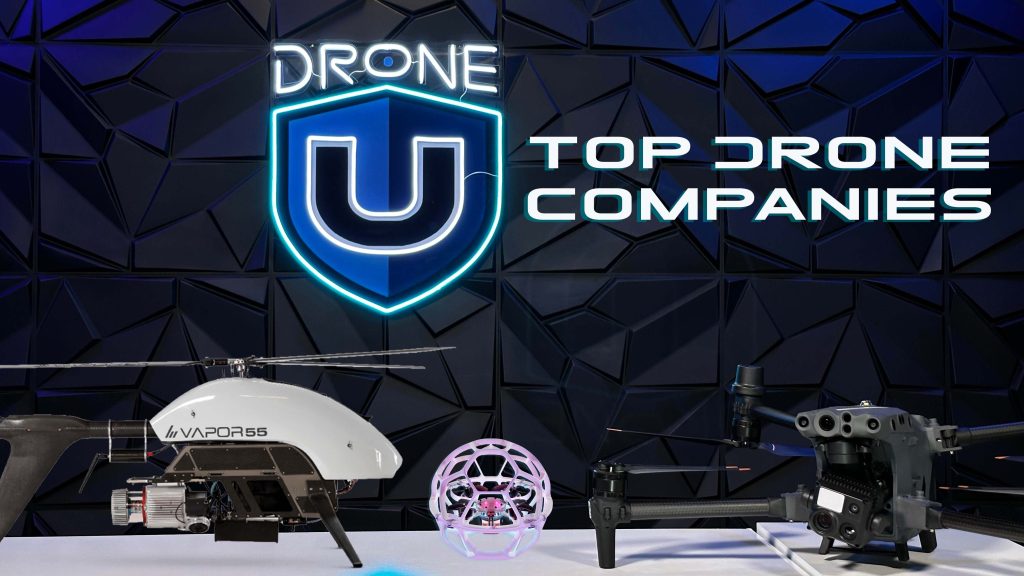
Yuneec
History and Evolution
Yuneec has a fascinating story that began far from the world of drones. Established in 1999 in China, Yuneec originally focused on electric aircraft, creating a name for themselves with their electric-powered aviation innovations. However, in 2014, they ventured into the world of consumer drones, making a significant impact that surged their reputation on a global scale. One thing that stands out about Yuneec’s journey is their commitment to high-quality engineering. Unlike many new entrants into the drone market, Yuneec brought an aviation pedigree that helped them elevate their products right from the get-go. The launch of the Yuneec Typhoon series marked their arrival in a competitive market dominated by the likes of DJI, and from that moment, they started capturing the attention of drone enthusiasts. Here are some milestone moments in Yuneec’s evolution:
- 2014: The introduction of the Typhoon Q500, which featured impressive camera capabilities and an easy-to-use interface, laid the groundwork for the company’s future success in the consumer drone domain.
- 2016: They shook things up with the unveiling of the Typhoon H, a hexacopter equipped with a 4K camera that offered 360-degree gimbal rotation. This drone introduced users to a slew of smart autonomous features, further demonstrating Yuneec’s innovation spirit.
- 2018 and Beyond: Yuneec expanded its focus to the commercial sector with the launch of the H520 and the solutions designed specifically for industries such as agriculture, construction, and public safety.
In a field where staying stagnant could spell doom, Yuneec has continually evolved its product line and adapted to market demands, a strategy that has solidified its standing in the industry.
Notable Drone Technologies
Yuneec is recognized for its cutting-edge technologies that make their drones versatile and reliable, appealing to both professional users and hobbyists. Let’s delve into some of their notable drone technologies that set them apart from competitors. 1. ST16 Ground Station One of the flagship features of many Yuneec drones is the ST16 Ground Station. This intuitive, integrated controller combines a transmitter, touchscreen display, and a live video feed all in one device.
- Ease of Use: The large interface makes it easy to control your drone, adjust camera settings, and monitor flight statistics in real-time.
- User Experience: I remember using the ST16 during a day out shooting a scenic landscape, and the clarity of the video feed allowed me to get the perfect shot without having to strain my eyes.
2. Smart Autonomous Features Yuneec incorporates various intelligent flight modes in its models, enhancing the user experience tremendously. Some examples include:
- Follow Me Mode: This feature allows the drone to autonomously follow a user, making it great for capturing action shots or movements, like biking or running.
- Point of Interest and Orbit Modes: These features allow users to select a specific location for the drone to circle around, which is particularly useful for capturing dynamic aerial shots and creative videography.
3. High-Quality Camera Systems Yuneec drones are equipped with advanced camera technology, especially the Typhoon H series.
- 4K Video and HDR Photography: The Typhoon H’s camera provides stunning visuals, shooting in 4K resolution with HDR capabilities, which I found incredibly helpful when working in varying light conditions.
- Dual-Lens Options: For professionals, Yuneec offers payload compatibility with different camera setups, including thermal imaging, catering to specialized fields such as agriculture and search-and-rescue operations.
4. Robust Build Quality Yuneec drones are designed to be rugged and reliable.
- Durable Materials: Constructed with high-quality materials, Yuneec’s drones are made to withstand the rigors of outdoor flying.
- Safety Features: Many models come equipped with advanced GPS systems and obstacle avoidance to ensure a smoother flying experience, especially for newcomers.
In conclusion, Yuneec has managed to translate its aviation expertise to the drone market, resulting in a strong product line that appeals to a variety of users. With their intelligent design, robust technology, and user-friendly interfaces, Yuneec continues to push the envelope in drone performance and capabilities. As we explore more of what the drone industry has to offer, the next stop will take us to the exciting world of Skydio, a company that’s raising the stakes with its innovations. Ready to soar? Let’s go!

Skydio
Innovations and Technology Focus
Skydio has truly set itself apart in the drone industry by leveraging cutting-edge technology powered by artificial intelligence. Founded in 2014, this California-based company has focused primarily on autonomous flight capabilities, and their innovation trajectory has positioned them as a game-changer, especially in the realm of action sports and complex environments. What makes Skydio stand out is its commitment to creating drones that are not just easy to fly but are smart enough to navigate challenging surroundings on their own. This approach has redefined the way we think about drone piloting—from needing extensive training and experience to genuinely enjoying the art of aerial photography without the burdens of complex controls. Here’s a closer look at some key innovations that highlight Skydio’s technological focus:
- Advanced Computer Vision: Skydio drones utilize cutting-edge computer vision technology to identify and avoid obstacles. This capability is particularly transformative for users who want to capture action-packed footage where sudden changes in environment are common.
- Autonomous Flight: Their proprietary AI enables drones to make split-second decisions. For instance, while mountain biking down a trail, the Skydio drone can autonomously track you at high speeds while dodging trees and other obstacles. You can ride freely, knowing the drone will capture those incredible moments without crashing.
- Skydio 2: The flagship Skydio 2 incorporates these advanced technologies with 4K60 HDR video, making it a powerful tool for both professionals and enthusiasts. No need for complicated controls; the drone effectively manages itself, allowing you to focus on your activities.
For anyone interested in capturing dynamic footage, the intelligent capabilities come in handy. I recall a weekend trip where I took my Skydio 2 on a hiking adventure. The drone effortlessly followed me along tricky trails, thanks to its impressive navigation skills. It’s a delightful experience when you can focus on enjoying the scenery and activities without worrying about the drone crashing.
Competitive Advantages in the Market
Skydio’s unique approach to drone technology has carved out a significant niche in a saturated market. Here are several competitive advantages that help Skydio stand tall against its competitors:
- Unmatched Autonomy: While many brands produce drones that require user input for navigation, Skydio’s drones can autonomously navigate complex environments. This level of autonomy allows you to engage in activities like skiing or biking without needing to pilot the drone manually.
- Safety Features: The advanced obstacle avoidance system is a major selling point. With a 360-degree awareness of its surroundings, a Skydio drone reduces the likelihood of collisions significantly. This feature is a game changer for new pilots who might feel anxious about flying.
- High-Resolution Cameras: With 4K capabilities, Skydio provides stunningly crisp imagery. Professionals will appreciate that their drones capture high-quality visuals that rival dedicated video cameras.
- Agile Performance: Skydio drones are designed to perform well in various weather conditions, enabling users to shoot exciting footage regardless of external challenges. Whether it’s capturing adventures on a sunny day or a moody rainy afternoon, you can still engage in your favorite activities.
- Developer-Friendly Ecosystem: Skydio invests in its developer community, providing SDKs that enable third parties to create applications for their drones. This opens adaptability to unique use cases in industries such as construction and agriculture, further expanding their market appeal.
In summary, Skydio has positioned itself as a leader in autonomous drone technology, creating products that enable unparalleled user experiences while pushing the boundaries of what drones can achieve. As we continue to explore the competitive landscape, we’ll next consider FreeFly Systems, a brand that specializes in professional-grade drones for serious filmmakers and commercial applications. Hold your breath; we’re not done soaring yet!
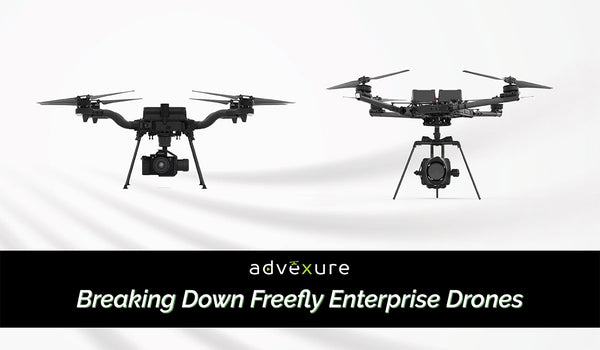
FreeFly Systems
Specialization in Professional Drones
FreeFly Systems has carved out a distinct niche in the drone market by focusing solely on high-performance filmmaking and professional applications. Founded in 2011, this Texas-based company began its journey in the aerial cinematography realm by developing products for the movie industry. It emphasizes precision, stability, and payload versatility, making FreeFly a go-to choice for serious filmmakers and creative professionals. What I love about FreeFly’s approach is their understanding of what professional operators need. They are not merely manufacturing drones; they’re crafting solutions tailored specifically for high-end video production and dynamic filming environments. Here are some standout features that illustrate FreeFly’s specialization:
- Heavy Payload Capacity: FreeFly drones are designed to carry heavier camera rigs—an essential capability for filmmakers who require high-end cameras like the RED series or Blackmagic Design. This gives filmmakers the flexibility to shoot with their preferred gear without compromise.
- Stabilization Technology: The company’s gimbals, notably the Movi series, are world-renowned for offering unparalleled stabilization, even in challenging conditions. I remember attending an outdoor shoot where we encountered high winds, yet the footage looked as smooth as ever, thanks to FreeFly’s innovative stabilization systems.
- User-Friendly Interfaces: Their drones often come with intuitive controls and smart features, allowing users to focus on creativity rather than technical complexities. This streamlined design is crucial in fast-paced shooting environments.
- Modular Design: Many of FreeFly’s drones boast modular designs, allowing operators to customize their setups based on the specific requirements of the shoot. This adaptability enables filmmakers to swap out components easily or adjust configurations on-the-fly.
FreeFly Systems envisions itself as more than just a drone manufacturer; they offer a comprehensive ecosystem for professionals eager to capture cinematic excellence.
Comparison with DJI Products
While FreeFly Systems caters to high-end professional needs, DJI continues to dominate the consumer drone market and is recognized for its innovation across a wide range of products. Let’s explore how FreeFly drones stack up against DJI in various categories. 1. Target Market
- FreeFly Systems: Focuses primarily on professional filmmakers and industrial applications, requiring advanced features with high payload capacities.
- DJI: Caters to a broader audience, including casual users, hobbyists, and professionals, providing drones suitable for various applications—from photography to mapping and more.
2. Payload Capacity and Stabilization
- FreeFly Systems: Drones like the Alta 8 can carry impressive payloads, up to 20 pounds, making them ideal for heavy professional cameras. Their gimbals deliver exceptional stabilization performance, crucial for professional-grade filming.
- DJI: While the Inspire 2 and Matrice series are capable of handling decent payloads (up to 10 pounds), they cannot match the sheer lifting power of FreeFly’s offerings, nor do they provide the same level of advanced gimbal stabilization when carrying heavier cameras.
3. Price Point
- FreeFly Systems: Generally carries a higher price point due to its specialized, high-performance drones. The cost is justified by heavy-duty capability and technical precision that professional users expect.
- DJI: Offers a wider range of models at different price points, making them more accessible for hobbyists and enthusiasts without breaking the bank.
4. User Experience
- FreeFly Systems: While they offer simplicity in terms of interface, the learning curve may be steeper for those who are unfamiliar with professional cinematography. The focus is more on users who have specific filmmaking experience.
- DJI: Known for its user-friendly designs, DJI drones often come with intuitive apps and accessibility features that appeal to casual users, allowing them to get started quickly.
Key Takeaway: If your focus is on professional filmmaking and cinematic quality, FreeFly Systems may be the ideal choice, despite the higher investment. However, for general use, versatility, and broader accessibility, DJI remains a formidable contender. In conclusion, FreeFly Systems presents a powerful option for those serious about professional aerial cinematography, leveraging their specialized technologies to stand apart. Next up, we’ll delve into PowerVision, a brand that combines creativity and innovative technology for unique drone solutions. Ready for the next ascent? Let’s dive in!
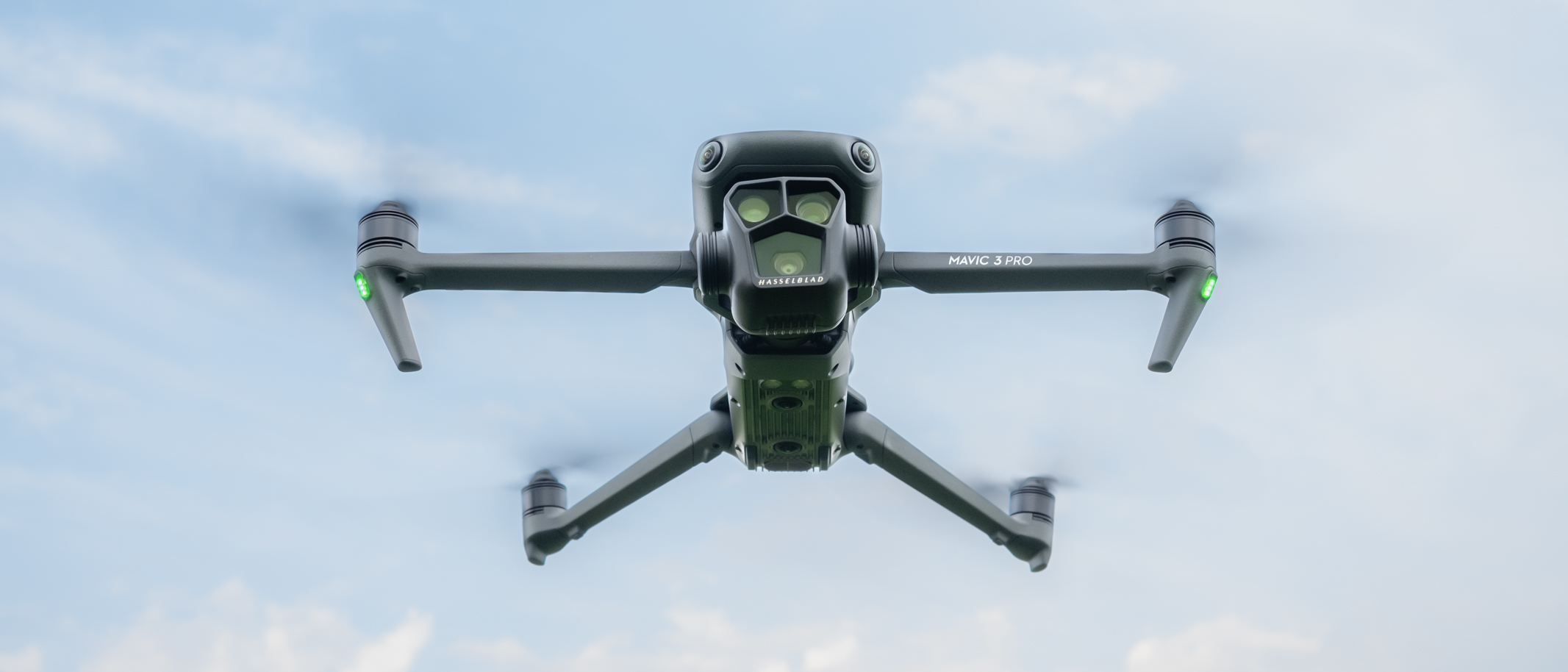
PowerVision
Product Range and Target Market
PowerVision has established itself as an innovative player in the drone industry, known for its unique designs and creative approaches to aerial technology. Founded in 2010, the company has focused on developing a diverse range of products aimed at both consumer and commercial markets. What’s particularly exciting about PowerVision is their commitment to creating drones that cater to various applications, from recreational flying to agriculture and beyond. One of the standout elements of PowerVision’s product range is its emphasis on specialized drones that combine versatility with cutting-edge technology. Here are a few notable models that illustrate their commitment to innovation:
- PowerRay: This underwater drone allows users to explore marine environments, capture stunning underwater footage, and even fish with the included bait drop feature. I remember using a PowerRay for a aquatic exploration trip, and the ability to capture vibrant marine life in 4K while controlling the drone from the surface was truly phenomenal!
- PowerEgg X: A unique design, the PowerEgg X can function as both a drone and a handheld camera, making it perfect for on-the-go enthusiasts. With its impressive 4K camera and the ability to operate in various weather conditions, it’s an excellent option for travelers who want flexibility.
- PowerDrone: Tailored for agricultural uses, this drone integrates advanced sensors and monitoring systems that help farmers assess crop health, monitor irrigation, and optimize farming operations.
PowerVision’s target market is broad, reaching out to creative hobbyists, underwater explorers, and agricultural professionals alike. Their diversity in product offerings allows them to tap into multiple sectors, providing tailored solutions for unique needs.
Strengths and Weaknesses Compared to DJI
When comparing PowerVision to a giant like DJI, it’s essential to highlight both the strengths and weaknesses of PowerVision products to understand where they stand in the competitive landscape. Strengths:
- Innovative Designs: PowerVision sets itself apart with its creative product designs. For instance, the dual functionality of the PowerEgg X as both a drone and a handheld camera is a refreshing twist that appeals to users wanting versatility.
- Niche Markets: PowerVision’s exploration into specialized niches, such as underwater drones and agricultural solutions, allows them to cater to specific user needs that many competitors, including DJI, don’t always address.
- User Engagement: The company often encourages user feedback and community engagement, which helps them refine products and develop new features based on what users want. This was evident when they incorporated suggestions from diving enthusiasts into the PowerRay’s functions.
Weaknesses:
- Market Share: While PowerVision has successfully carved out its niche, it can’t quite match DJI’s dominance in the overall drone market. DJI maintains a massive global market share, which can limit PowerVision’s reach.
- Limited Range: Compared to the extensive range of drones DJI offers—from beginner models to advanced professional tools—PowerVision’s product lineup is more specialized. This means that a user looking for a multi-purpose drone might find fewer options with PowerVision.
- Availability and Support: DJI has established a robust global distribution network along with extensive customer support. In contrast, PowerVision may not have the same level of accessibility or support options, which can deter potential buyers who might value a strong customer service foundation.
Table: Quick Comparison of PowerVision and DJI
| Feature | PowerVision | DJI |
|---|---|---|
| Product Range | Specialized drones (underwater, farming) | Extensive range for all skill levels |
| Market Share | Smaller compared to DJI | Dominates the global market |
| Innovation | Unique designs and functionalities | Industry-leading features and tech |
| User Support | Limited distribution and customer support | Strong global support network |
In conclusion, PowerVision has made significant strides in introducing innovative drones targeted at niche markets, offering users unique solutions where they could not find options with other brands. However, it still faces considerable challenges in competing against the market leader, DJI, primarily in terms of market share and product variety. As we explore more in the drone industry, our next stop will take us to Walkera, a brand known for its consumer-friendly models and diverse strategies. Buckle in; the adventure continues!

Walkera
Established Consumer Drone Manufacturer
Walkera is a prominent name in the world of drones, particularly when it comes to consumer models. Established in 1994, this Chinese manufacturer has been in the game long before many of the current players took off. With nearly three decades of experience, Walkera has carved out a reputation as a reliable and innovative manufacturer, appealing to both hobbyists and professional users. What I find particularly captivating about Walkera is their commitment to producing a diverse array of drone models that cater to different skill levels and usage needs. From beginner-friendly flyers to advanced racing drones, Walkera has managed to build a product range that draws in a variety of users. Here are some noteworthy features of Walkera’s offerings:
- Extensive Product Line: Walkera provides everything from sleek camera drones to nimble racing models, addressing the needs of aspiring drone pilots, as well as those looking for high-performance racing equipment.
- Focus on Durability: Many Walkera drones are constructed to withstand tough conditions, which makes them suitable for outdoor adventures. I once flew a Walkera drone during a windy day, and despite the challenging environment, it performed admirably.
- Rapid Development: Walkera is known for frequently updating its product line, which means they often release new models that incorporate the latest technology and customer feedback.
Their blend of variety and innovation has enabled them to maintain a solid foothold in the competitive drone landscape, even amid fierce competition from brands like DJI and Skydio.
Market Strategies and Global Reach
Walkera’s market strategies are pivotal to its success, allowing them to compete effectively in both domestic and international markets. Here’s a deeper look at how Walkera positions itself in the drone industry:
- Targeting Diverse Markets: Walkera has recognized the various niches within the drone market and tailored their offerings accordingly. For example, they have specific models designed for aerial photography, leisure activities, and drone racing. By addressing these different sectors, they effectively widen their customer base and appeal to hobbyists and serious enthusiasts alike.
- Affordability Factor: Price competitiveness is one of Walkera’s significant advantages. Their drones often come at a lower price point compared to upper-tier offerings from brands like DJI. This affordability factor makes Walkera an appealing option for beginners who might be hesitant to invest large sums into their first drone.
- Strong Online Presence: Walkera has leveraged e-commerce platforms and social media to reach a broader audience outside of China. By utilizing online marketplaces, they make it easier for customers worldwide to access their products, which is a smart move in today’s digital age.
- Community Engagement: Walkera actively engages with its user community through forums, social media groups, and user feedback. This interaction not only helps them enhance their products based on user experiences but also fosters a loyal customer base.
- Global Partnerships: Walkera has established strong distribution relationships in various countries, ensuring their products reach different geographic markets effectively. This helps cross borders for a wider audience, expanding their influence in regions where drone use is on the rise.
Table: Key Features of Walkera Drones vs. Other Competitors
| Feature | Walkera | DJI |
|---|---|---|
| Product Variety | Wide range for all levels | Extensive but specific niches |
| Price Point | Generally more affordable | Mid-range to high-end |
| Customer Engagement | Active user communities | Strong customer support |
| Innovation | Frequent new releases | Consistent technology leader |
| Durability | Built for tough conditions | Robust, but focused on performance |
In summary, Walkera has positioned itself as a veteran consumer drone manufacturer with a diverse range of models appealing to different user segments. Their strategic focus on affordability, community engagement, and global reach makes them a solid contender in an ever-evolving industry. As we wrap up this exploration of the competitive landscape in drones, it’s prudent to acknowledge the dynamism of this sector and how diverse companies contribute uniquely to our aerial adventures. Whether you’re looking for fun, professional filming, or racing, the options are more plentiful than ever!


